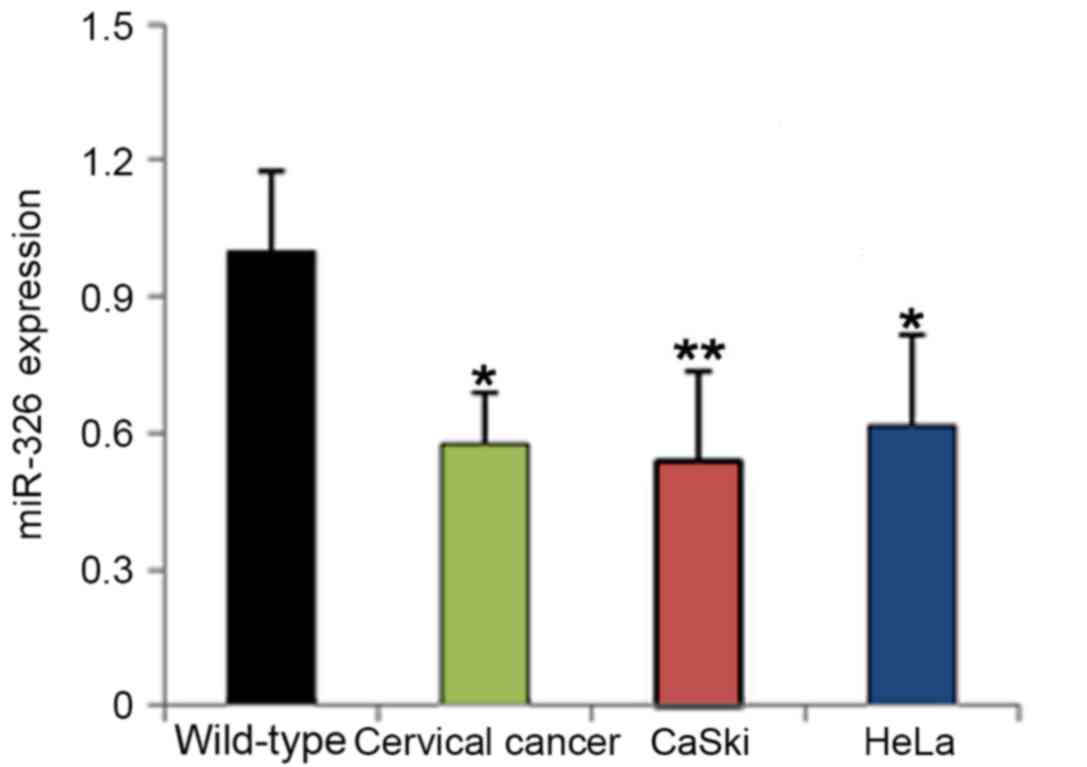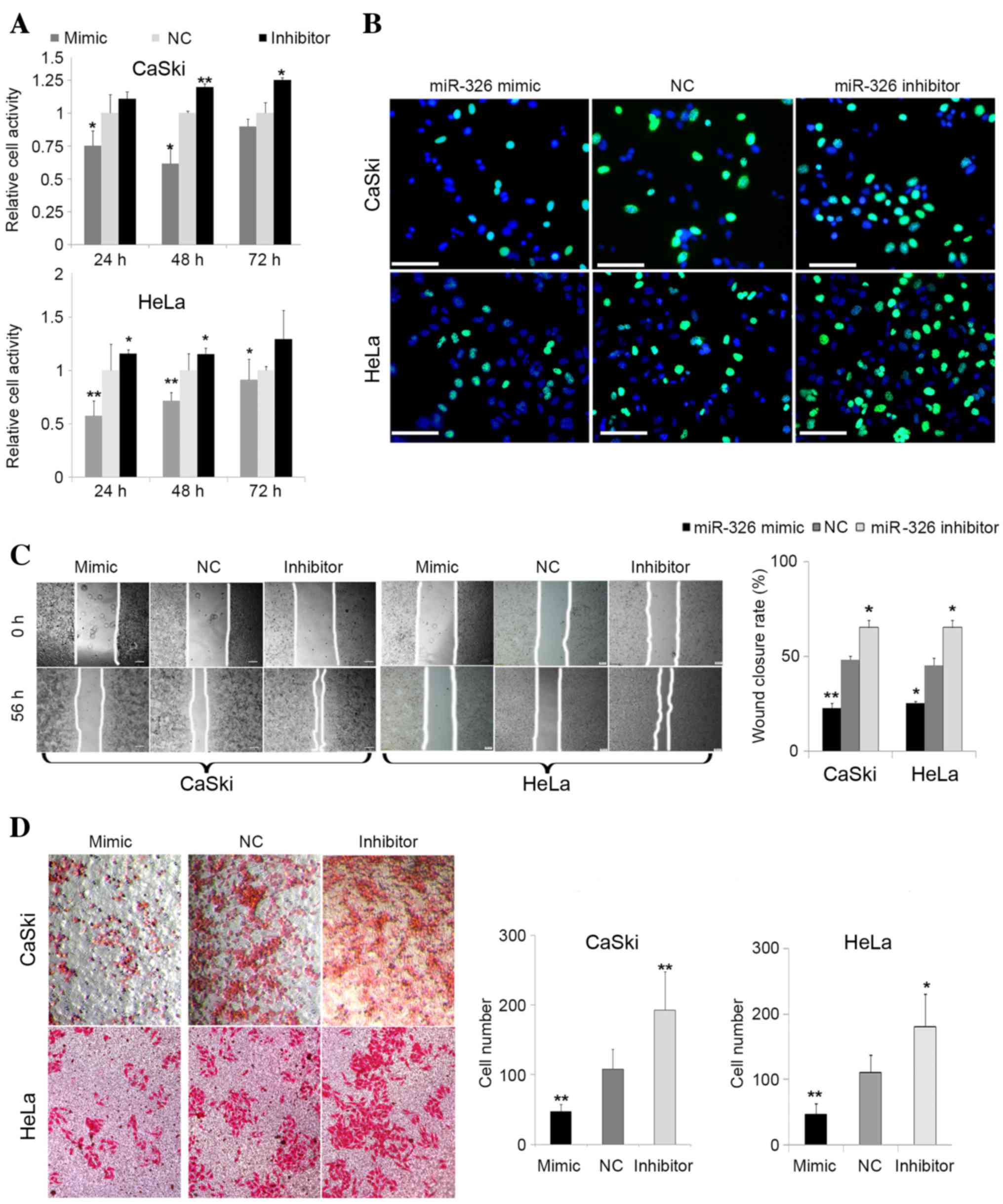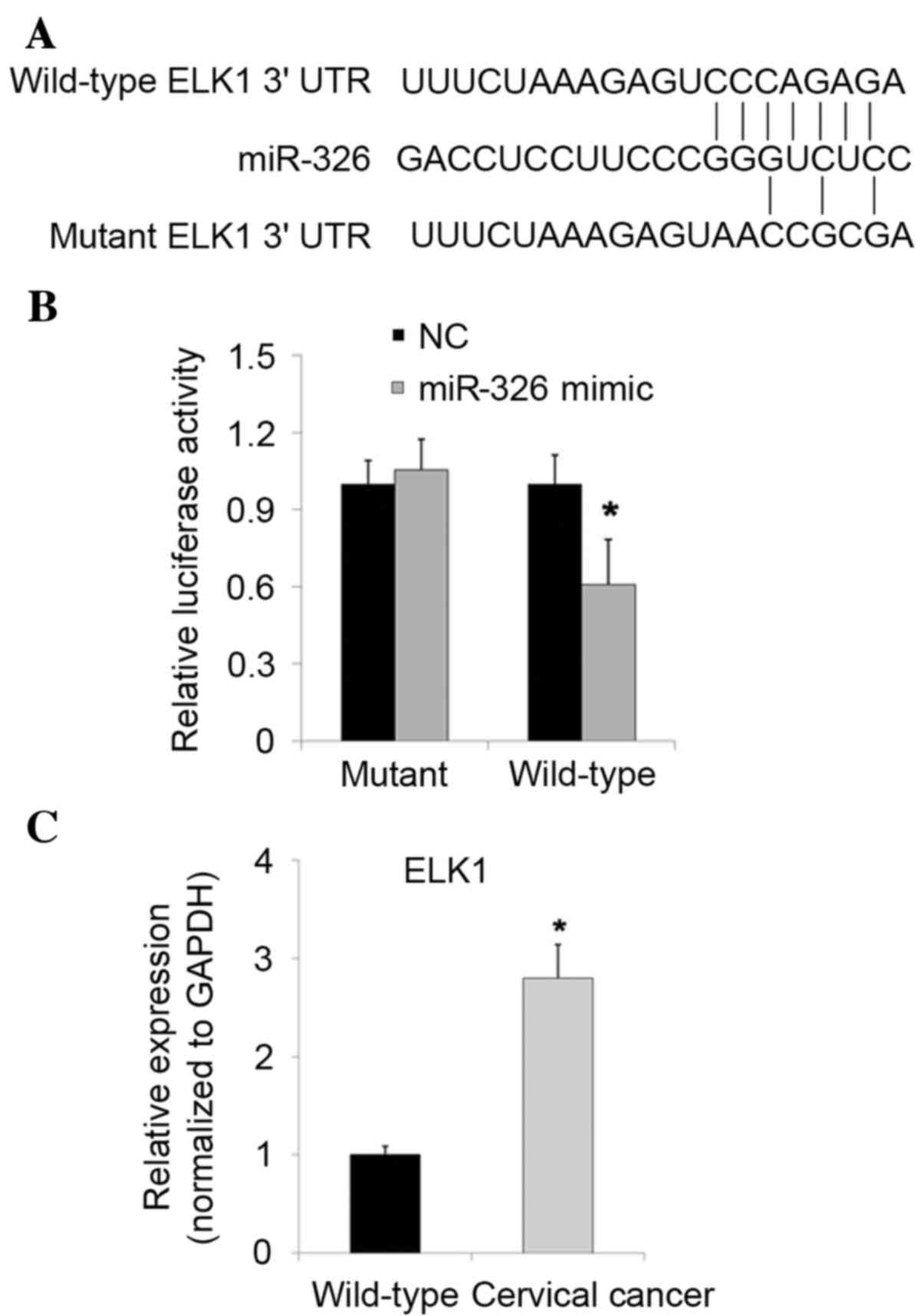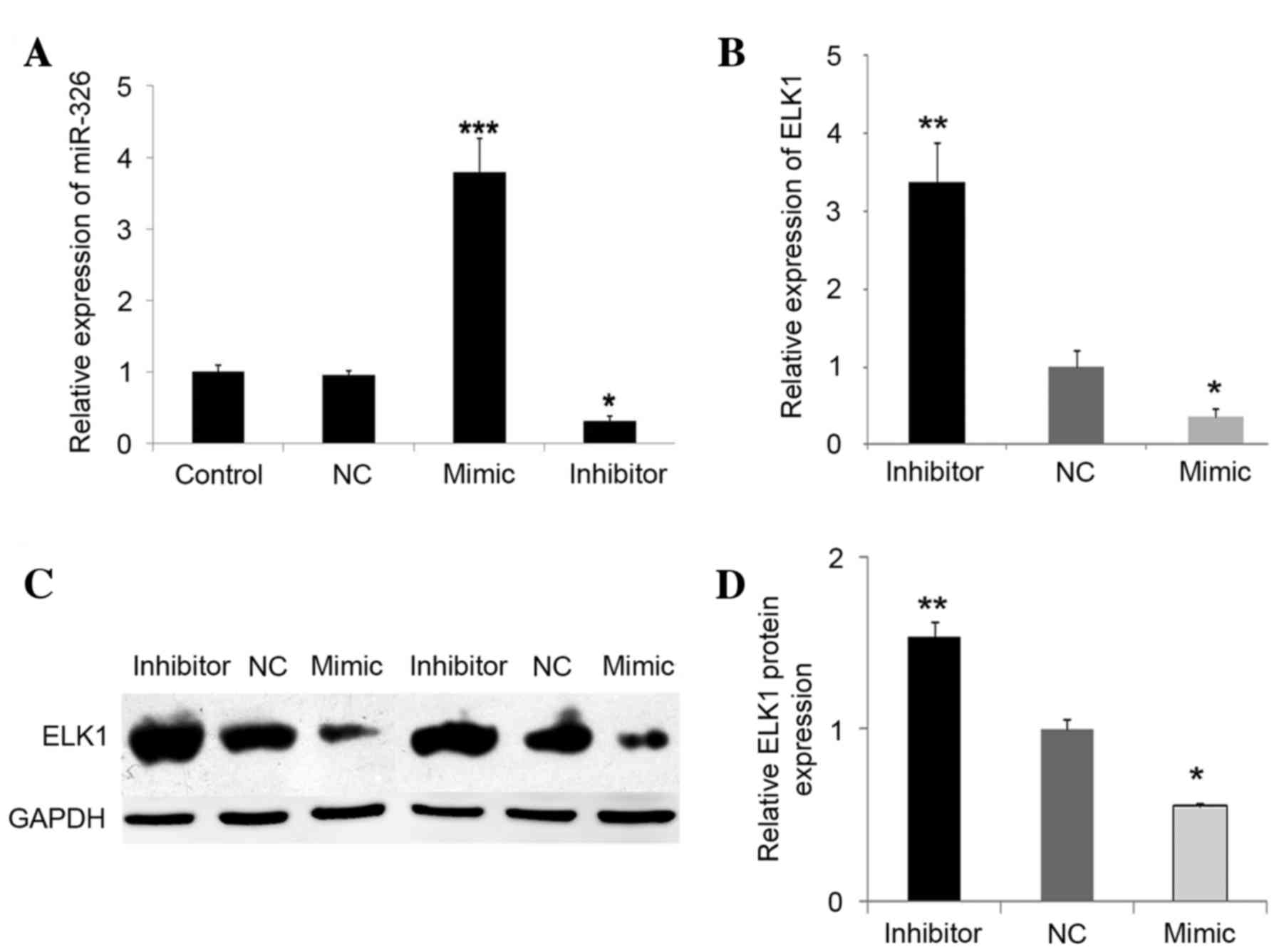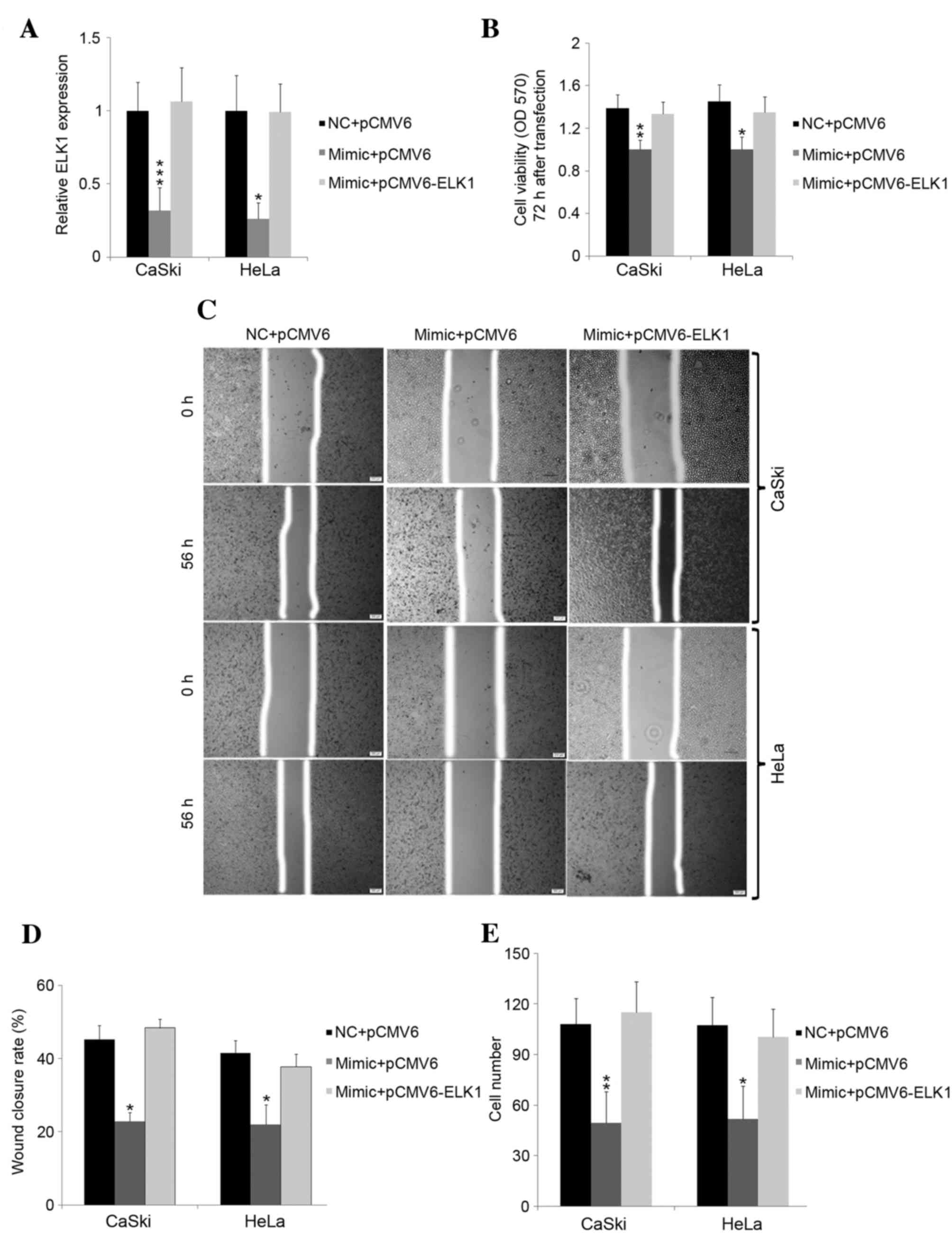|
1
|
Catarino R, Petignat P, Dongui G and
Vassilakos P: Cervical cancer screening in developing countries at
a crossroad: Emerging technologies and policy choices. World J Clin
Oncol. 6:281–290. 2015. View Article : Google Scholar : PubMed/NCBI
|
|
2
|
Pimple S, Mishra G and Shastri S: Global
strategies for cervical cancer prevention. Curr Opin Obstet
Gynecol. 28:4–10. 2016. View Article : Google Scholar : PubMed/NCBI
|
|
3
|
Morris E and Roett MA: Genital cancers in
women: Cervical cancer. FP Essent. 438:18–23. 2015.PubMed/NCBI
|
|
4
|
Karlidag T, Cobanoglu B, Keles E, Alpay
HC, Ozercan I, Kaygusuz I, Yalcin S and Sakallioglu O: Expression
of Bax, p53, and p27/kip in patients with papillary thyroid
carcinoma with or without cervical nodal metastasis. Am J
Otolaryngol. 28:31–36. 2007. View Article : Google Scholar : PubMed/NCBI
|
|
5
|
Wang X, Tang S, Le SY, Lu R, Rader JS,
Meyers C and Zheng ZM: Aberrant expression of oncogenic and
tumor-suppressive microRNAs in cervical cancer is required for
cancer cell growth. PLoS One. 3:e25572008. View Article : Google Scholar : PubMed/NCBI
|
|
6
|
Noordhuis MG, Eijsink JJ, Roossink F, de
Graeff P, Pras E, Schuuring E, Wisman GB, de Bock GH and van der
Zee AG: Prognostic cell biological markers in cervical cancer
patients primarily treated with (chemo)radiation: A systematic
review. Int J Radiat Oncol Biol Phys. 79:325–334. 2011. View Article : Google Scholar : PubMed/NCBI
|
|
7
|
Davis-Dusenbery BN and Hata A: Mechanisms
of control of microRNA biogenesis. J Biochem. 148:381–392.
2010.PubMed/NCBI
|
|
8
|
Garzon R, Calin GA and Croce CM: MicroRNAs
in cancer. Annu Rev Med. 60:167–179. 2009. View Article : Google Scholar : PubMed/NCBI
|
|
9
|
Bartel DP: MicroRNAs: Genomics,
biogenesis, mechanism, and function. Cell. 116:281–297. 2004.
View Article : Google Scholar : PubMed/NCBI
|
|
10
|
Bartel DP: MicroRNAs: Target recognition
and regulatory functions. Cell. 136:215–233. 2009. View Article : Google Scholar : PubMed/NCBI
|
|
11
|
Juan L, Tong HL, Zhang P, Guo G, Wang Z,
Wen X, Dong Z and Tian YP: Identification and characterization of
novel serum microRNA candidates from deep sequencing in cervical
cancer patients. Sci Rep. 4:62772014. View Article : Google Scholar : PubMed/NCBI
|
|
12
|
Karakatsanis A, Papaconstantinou I,
Gazouli M, Lyberopoulou A, Polymeneas G and Voros D: Expression of
microRNAs, miR-21, miR-31, miR-122, miR-145, miR-146a, miR-200c,
miR-221, miR-222, and miR-223 in patients with hepatocellular
carcinoma or intrahepatic cholangiocarcinoma and its prognostic
significance. Mol Carcinog. 52:297–303. 2013. View Article : Google Scholar : PubMed/NCBI
|
|
13
|
Zeng K, Zheng W, Mo X, Liu F, Li M, Liu Z,
Zhang W and Hu X: Dysregulated microRNAs involved in the
progression of cervical neoplasm. Arch Gynecol Obstet. 292:905–913.
2015. View Article : Google Scholar : PubMed/NCBI
|
|
14
|
Sdel Díaz-González M, Deas J,
Benítez-Boijseauneau O, Gómez-Cerón C, Bermúdez-Morales VH,
Rodríguez-Dorantes M, Pérez-Plasencia C and Peralta-Zaragoza O:
Utility of microRNAs and siRNAs in Cervical Carcinogenesis. Biomed
Res Int. 2015:3749242015.PubMed/NCBI
|
|
15
|
Wang L, Wang B, Fang M, Guo F and Cui M:
Identification of microRNAs and target genes involved in serous
ovarian carcinoma and their influence on survival. Eur J Gynaecol
Oncol. 35:655–661. 2014.PubMed/NCBI
|
|
16
|
Tarasov VA, Matishov DG, Shin EF, Boiko
NV, Timoshkina NN, Makhotkin MA, Lomonosov AM, Kirpii AA, Kit OI
and Maksimov AY: Coordinated aberrant expression of miRNAs in colon
cancer. Genetika. 50:1232–1244. 2014.(In Russian). PubMed/NCBI
|
|
17
|
Serpico D, Molino L and Di Cosimo S:
microRNAs in breast cancer development and treatment. Cancer Treat
Rev. 40:595–604. 2014. View Article : Google Scholar : PubMed/NCBI
|
|
18
|
Mo W, Tong C, Zhang Y and Lu H: microRNAs'
differential regulations mediate the progress of human
papillomavirus (HPV)-induced cervical intraepithelial neoplasia
(CIN). BMC Syst Biol. 9:42015. View Article : Google Scholar : PubMed/NCBI
|
|
19
|
Kim J, Krichevsky A, Grad Y, Hayes GD,
Kosik KS, Church GM and Ruvkun G: Identification of many microRNAs
that copurify with polyribosomes in mammalian neurons. Proc Natl
Acad Sci USA. 101:360–365. 2004. View Article : Google Scholar : PubMed/NCBI
|
|
20
|
Thatcher EJ, Flynt AS, Li N, Patton JR and
Patton JG: MiRNA expression analysis during normal zebrafish
development and following inhibition of the Hedgehog and Notch
signaling pathways. Dev Dyn. 236:2172–2180. 2007. View Article : Google Scholar : PubMed/NCBI
|
|
21
|
Meng F, Henson R, Lang M, Wehbe H,
Maheshwari S, Mendell JT, Jiang J, Schmittgen TD and Patel T:
Involvement of human micro-RNA in growth and response to
chemotherapy in human cholangiocarcinoma cell lines.
Gastroenterology. 130:2113–2129. 2006. View Article : Google Scholar : PubMed/NCBI
|
|
22
|
Zhang ZL, Bai ZH, Wang XB, Bai L, Miao F
and Pei HH: miR-186 and 326 predict the prognosis of pancreatic
ductal adenocarcinoma and affect the proliferation and migration of
cancer cells. PLoS One. 10:e01188142015. View Article : Google Scholar : PubMed/NCBI
|
|
23
|
Wang S, Lu S, Geng S, Ma S, Liang Z and
Jiao B: Expression and clinical significance of microRNA-326 in
human glioma miR-326 expression in glioma. Med Oncol. 30:3732013.
View Article : Google Scholar : PubMed/NCBI
|
|
24
|
Zhou J, Xu T, Yan Y, Qin R, Wang H, Zhang
X, Huang Y, Wang Y, Lu Y, Fu D and Chen J: MicroRNA-326 functions
as a tumor suppressor in glioma by targeting the Nin one binding
protein (NOB1). PLoS One. 8:e684692013. View Article : Google Scholar : PubMed/NCBI
|
|
25
|
Livak KJ and Schmittgen TD: Analysis of
relative gene expression data using real-time quantitative PCR and
the 2(−Delta Delta (CT)) method. Methods. 25:402–408. 2001.
View Article : Google Scholar : PubMed/NCBI
|
|
26
|
Janicek MF and Averette HE: Cervical
cancer: Prevention, diagnosis, and therapeutics. CA Cancer J Clin.
51:92–118. 2001. View Article : Google Scholar : PubMed/NCBI
|
|
27
|
Magné N, Deutsch E and Haie-Meder C:
Current data on radiochemotherapy and potential of targeted
therapies for cervical cancers. Cancer Radiother. 12:31–36. 2008.
View Article : Google Scholar : PubMed/NCBI
|
|
28
|
Iorio MV and Croce CM: microRNA
involvement in human cancer. Carcinogenesis. 33:1126–1133. 2012.
View Article : Google Scholar : PubMed/NCBI
|
|
29
|
Garzon R, Marcucci G and Croce CM:
Targeting microRNAs in cancer: Rationale, strategies and
challenges. Nat Rev Drug Discov. 9:775–789. 2010. View Article : Google Scholar : PubMed/NCBI
|
|
30
|
Ferretti E, De Smaele E, Miele E, Laneve
P, Po A, Pelloni M, Paganelli A, Di Marcotullio L, Caffaelli E,
Screpanti I, et al: Concerted microRNA control of Hedgehog
signalling in cerebellar neuronal progenitor and tumour cells. EMBO
J. 27:2616–2627. 2008. View Article : Google Scholar : PubMed/NCBI
|
|
31
|
Wu H, Wang Y, Wu C, Yang P, Li H and Li Z:
Resveratrol induces cancer cell apoptosis through
miR-326/PKM2-mediated ER stress and mitochondrial fission. J Agric
Food Chem. 64:9356–9367. 2016. View Article : Google Scholar : PubMed/NCBI
|
|
32
|
Wang R, Chen X, Xu T, Xia R, Han L, Chen
W, De W and Shu Y: MiR-326 regulates cell proliferation and
migration in lung cancer by targeting phox2a and is regulated by
HOTAIR. Am J Cancer Res. 6:173–186. 2016.PubMed/NCBI
|
|
33
|
Kefas B, Comeau L, Floyd DH, Seleverstov
O, Godlewski J, Schmittgen T, Jiang J, diPierro CG, Li Y, Chiocca
EA, et al: The neuronal microRNA miR-326 acts in a feedback loop
with notch and has therapeutic potential against brain tumors. J
Neurosci. 29:15161–15168. 2009. View Article : Google Scholar : PubMed/NCBI
|
|
34
|
Zhou J, Xu T, Yan Y, Qin R, Wang H, Zhang
X, Huang Y, Wang Y, Lu Y, Fu D and Chen J: MicroRNA-326 functions
as a tumor suppressor in glioma by targeting the Nin one binding
protein (NOB1). PLoS One. 8:e684692013. View Article : Google Scholar : PubMed/NCBI
|
|
35
|
Galamb Á, Benczik M, Zinner B, Vígh E,
Baghy K, Jeney C, Kiss A, Lendvai G and Sobel G: Dysregulation of
microRNA expression in human cervical preneoplastic and neoplastic
lesions. Pathol Oncol Res. 21:503–508. 2015. View Article : Google Scholar : PubMed/NCBI
|
|
36
|
Hollenhorst PC, McIntosh LP and Graves BJ:
Genomic and biochemical insights into the specificity of ETS
transcription factors. Annu Rev Biochem. 80:437–471. 2011.
View Article : Google Scholar : PubMed/NCBI
|
|
37
|
Martinelli E, Morgillo F, Troiani T and
Ciardiello F: Cancer resistance to therapies against the
EGFR-RAS-RAF pathway: The role of MEK. Cancer Treat Rev. 53:61–69.
2016. View Article : Google Scholar : PubMed/NCBI
|
|
38
|
O'Donnell A, Odrowaz Z and Sharrocks AD:
Immediate-early gene activation by the MAPK pathways: What do and
don't we know? Biochem Soc Trans. 40:58–66. 2012. View Article : Google Scholar : PubMed/NCBI
|
|
39
|
Odrowaz Z and Sharrocks AD: ELK1 uses
different DNA binding modes to regulate functionally distinct
classes of target genes. PLoS Genet. 8:e10026942012. View Article : Google Scholar : PubMed/NCBI
|
|
40
|
Pallai R, Bhaskar A, Sodi V and Rice LM:
Ets1 and Elk1 transcription factors regulate cancerous inhibitor of
protein phosphatase 2A expression in cervical and endometrial
carcinoma cells. Transcription. 3:323–335. 2012. View Article : Google Scholar : PubMed/NCBI
|



